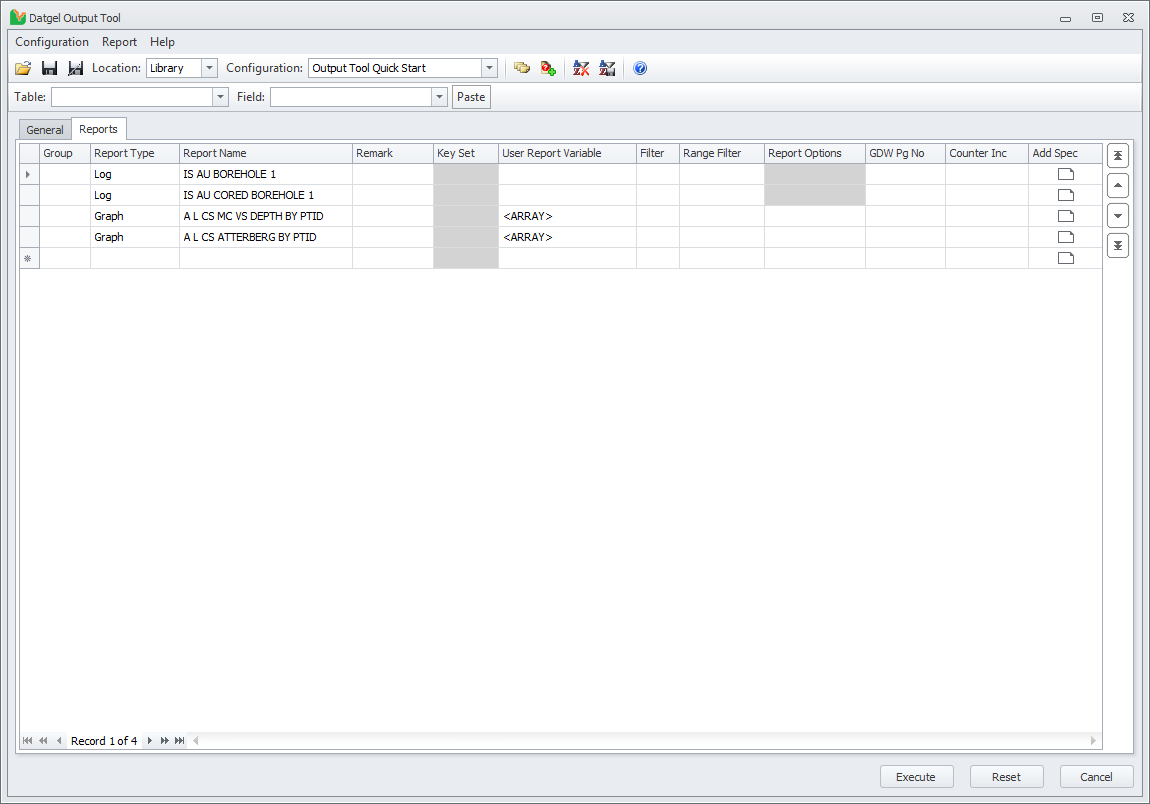Quick Start Guide
Overview
This page guides you through setup of the Datgel Output Tool and explains some basic operations. It assumes you have a basic understanding of gINT INPUT and OUTPUT.
gINT
gINT Logs, Professional or Professional Plus must be installed and licensed on your computer to use the Output Tool.
Datgel Output Tool Download
Download the Output Tool package and Datgel Toolbox Installer:
- Full version: https://www.datgel.com/customer/downloadableproducts
- Trial version: https://www.datgel.com/trial-software
Install Datgel Toolbox
Before Installation
A few basic preparations can help ensure an effortless installation.
- Make sure that the computer where you plan to install the program meets the minimum hardware and software requirements.
- Connect your PC to Internet before installation (the process may need a working Internet connection).
- The Datgel Toolbox program requires that the Microsoft .NET 4.8 framework is installed on the PC prior to the installation of the Tool. If your PC does not have this, then it will be automatically downloaded and installed during the Tool installation process.
- Log into the PC with Administrator privileges before starting installation.
- It is recommended that you exit out of other applications that maybe running on your PC.
- Close gINT before you start installation.
Installation
- Run the installer, typically named Datgel.Toolbox.20##.#.#_YYYY-MM-DDTHHmmss.exe.
- When you come to the Components screen, be sure to select this product, or you can simply install all Components.
- The gINT*.exe.config files for gINT versions V8i and 10..# are edited by Datgel software during installation.
Datgel Licensing
Package Content
The Download package zip contains:
- Documentation folder includes:
- EULA
- Links to the product and licensing online user guides
- Link to email to support.
- gINT Files folder includes:
- "dot X.XX.X lib.glb" (gINT library file)
Unzip and copy the content of the folder to your local computer.
Open gINT
- Start gINT
- When you open gINT if it asked for a library, then browse to the library that you selected for the gINT Object Installer step.
- Select File > Open Project. Browse to a project that works with the selected library.
Using the tool
Aim: PDF a set of reports (log and two graphs) collated by PointID
The reports used in the example are in the Datgel DGD Tool. You can download the trial of the DGD Tool, and use it with the Output Tool. The Output Tool gINT objects are already merged into the DGD Tool library.
A more common use of Group by Key Set, is to output a non-cored and cored borehole logs.
- Launch the Output Tool, by selecting Add-ins > Datgel Output Tool > Output Tool.
- Set the configuration like the next image (click to enlarge)
- Configuration type: Group By Key Set,
- Key Set > Source Table: Point,
- Key Set: Select the desired points to be printed - BH 2 and BH 3 in the example
- Select the destination file name
- Set the Bookmarks. Level 1: Key Set, Level 2: Report Name. If you are using the DGD Tool, you could select Report Caption for Level 2.
- Now go to the Reports tab, and set the configuration like the next image. The Report Type and Report Name fields drop-down lists are populated with the reports existing in your library.
- Report Type: Log, Report Name: Select a soil borehole log report (IS AU BOREHOLE 1 in the example)
- Report Type: Log, Report Name: Select a cored borehole log report (IS AU CORED BOREHOLE 1 in the example)
- Report Type: Graph, Report Name: Select your desired report (A L CS MC VS DEPTH BY PTID in the example)
- Report Type: Graph, Report Name: Select your desired report (A L CS ATTERBERG BY PTID in the example)
- Click on Execute. You will be prompted to save the configuration. Then gINT will print the reports and save the pdf file in the selected folder. The resulting report contains the Log and the Graphs for each PointID, compiled by PointID, with the bookmarks automatically created according to the settings.
Further Tutorials
When you are comfortable with basic operations with the Datgel Output Tool, you can learn about more advanced operations in section Tutorials.


